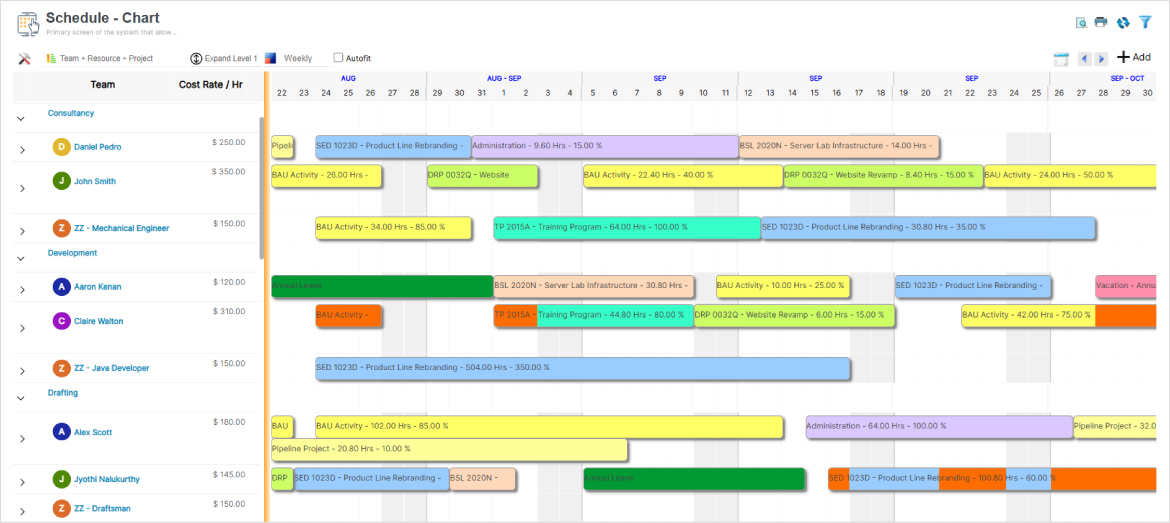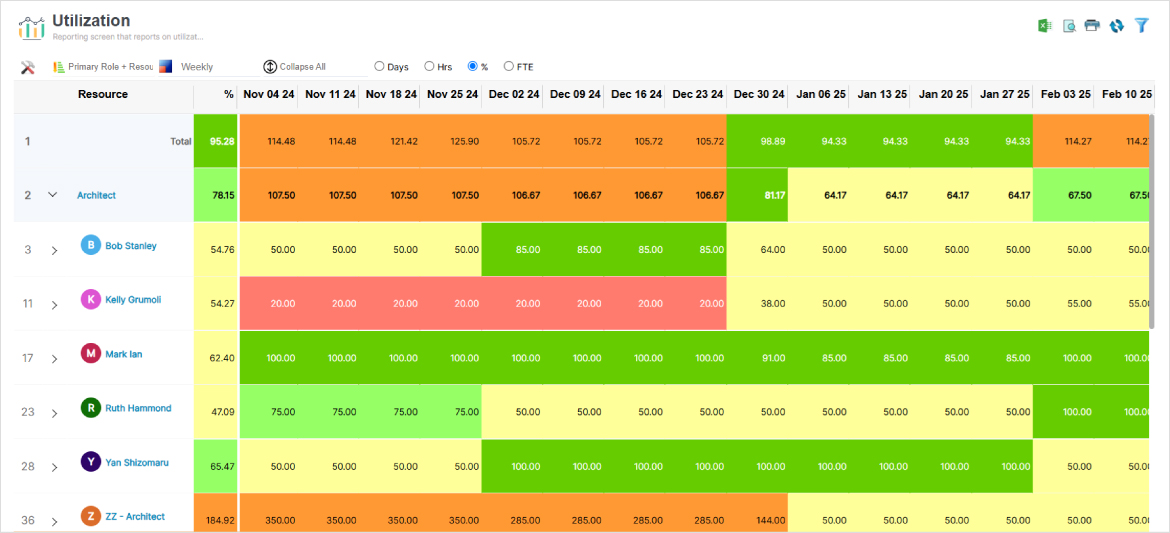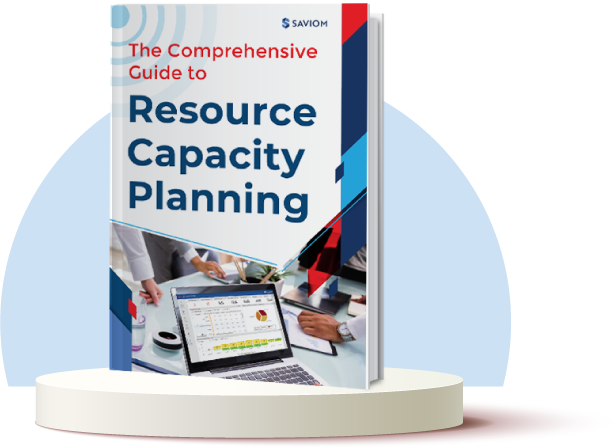According to a 2024 PwC survey, “Nearly 50% of the respondents across 50 countries noted a significant increase in workload over the past year.”
This concerning statistic highlights that many firms across geographies still lack an effective workload management framework. Overburdened employees often experience declining morale, disengagement, and burnout, all of which hinder productivity and performance.
The consequences are far-reaching— diminished employee output, compromised work quality, and a substantial long-term impact on organizational revenue and profitability.
To address this, organizations must adopt best practices for balanced workload management. By doing so, they can optimize resource utilization, enhance employee productivity, and ensure seamless project execution.
In this blog, we will explore the fundamentals of workload management, covering its benefits, challenges, and actionable tips for its effective implementation.
Let’s dive in.
What is Workload Management?
Workload management, also known as workload planning, is an ongoing process of forecasting, planning, scheduling, prioritizing, and monitoring work in a balanced and efficient manner. The primary goal is ensuring optimal resource utilization and timely completion of projects.
It includes evaluating the volume and complexity of work and prioritizing tasks based on their impact. Workload management can be implemented at a company, team, or individual level.
Workload Management Example
A construction company takes on a commercial building project, dividing it into four key phases: Site Preparation, Foundation Laying, Structural Work, and Finishing.
To manage workloads effectively, the project manager evaluates the timeline and identifies resource requirements for each phase. For instance:
- Site Preparation requires earthmoving equipment and operators.
- Foundation Laying demands concrete specialists and formwork teams.
- Structural work needs steelworkers and crane operators.
- Finishing involves painters, electricians, and carpenters.
In case of skilled labor and equipment shortages or unavailability, the manager collaborates with cross-functional teams, recruitment teams, or vendors to balance team capacity and project demands.
The manager prioritizes key tasks based on dependencies and assigns roles based on expertise for compliance-critical tasks. For instance:
- Skilled operators are assigned to operate heavy machinery for ‘Site Preparation.’
- Certified engineers oversee ‘Foundation Laying’ to ensure compliance with building codes.
- Experienced electricians are allocated to the ‘Finishing phase,’ ensuring smooth wiring installations.
The manager continuously assesses workload metrics, such as task progress, and tracks resource utilization. If imbalances arise, workloads are redistributed in real time to prevent overwork or idle time. For instance, additional workers are sourced during peak demand and underutilized resources are reassigned to assist other teams.
By prioritizing tasks, tracking utilization, and adjusting plans dynamically, the manager ensures smooth project execution and delivery.
Now that we know what workload management is let us dive into its importance.
Why is Workload Management Important?
Picture a team drowning under piles of work, facing pressing deadlines and mounting pressure — a scenario that’s all too common during the execution phase of many projects. In such circumstances, adopting a robust workload management framework is no longer optional but essential.
Effective workload management focuses on assigning and managing tasks based on resource availability and capacity to ensure balanced workloads and avoid overburdening resources. This allows businesses to complete projects on time and within budget, ultimately enhancing profitability.
Moreover, a well-managed workload directly supports employee well-being. Regular monitoring of workforce utilization allows managers to address stress, burnout, and low morale proactively. This fosters a supportive work environment that boosts engagement, productivity, and job satisfaction while improving employee retention.
In addition, workload management promotes seamless collaboration and workflows. By clearly defining responsibilities and addressing bottlenecks, managers ensure that teams work cohesively toward shared goals. This boosts productivity and positions the organization for sustainable growth and long-term success.
Having covered the benefits of workload management, let’s delve into the common challenges organizations encounter.
Read More: What is Workforce Planning, and How Does It Help Improve Business Efficiency?
Some Common Workload Management Challenges
Managers face several challenges when overseeing and managing workloads. Here are a few key ones.
Inability to Prioritize Critical Tasks or Projects
Project managers often fail to identify and prioritize critical tasks. This lack of clarity results in time spent on less impactful activities while key tasks with the highest strategic value are delayed. Consequently, this disrupts project workflows, causes missed deadlines, and increases costs.
Limited Visibility into Team Capacity and Availability
Without centralized visibility into workforce capacity or availability, managers fail to allocate the most suitable and cost-effective resources to projects. Without understanding who is overburdened or underutilized, work distribution may become imbalanced, leading to burnout for some and disengagement for others.
Read More: What is Resource Availability in Project Management, and Why Does It Matter?
Uneven Distribution of Tasks Within the Team
When managers lack real-time insights into team members’ schedules and skills, they may inadvertently overload certain personnel while others remain underutilized. This imbalance disrupts team efficiency, causes low employee morale, and reduces productivity.
Difficulty Managing Conflicting Deadlines and Expectations
When multiple projects run concurrently and share limited resources, managers struggle to prioritize and schedule tasks effectively. This often escalates employee stress levels, causes confusion, delays project timelines, compromises quality, and hampers brand reputation.
Read More: What is Resource Scheduling? How to Schedule Resources for Projects Efficiently?
Let’s understand how firms can streamline workload management for greater efficiency and success.
15 Effective Workload Management Tips
Here are key practices to manage workload effectively:
Organize Daily Standups or Check-Ins
Conducting daily standups facilitates clear communication, ensuring that all members remain aligned with project objectives, current progress, existing workloads, etc. It also provides an opportunity to address challenges or blockers, allowing teams to remain productive and contribute to overall business success.
Take Account of Ongoing and Upcoming Projects
Effective workload management begins with understanding the full scope of work. By tracking ongoing and upcoming projects, managers can determine the necessary resources in terms of type, quantity, and quality. This also allows teams to plan better and ensures timely project completion without overburdening individuals.
Identify and Prioritize Task Dependencies
Recognizing task dependencies is critical to maintaining a smooth workflow. By identifying which tasks rely on others to complete, managers can prioritize assignments strategically and prevent delays. This approach ensures that critical paths are maintained, avoiding bottlenecks in the project timeline.
Forecast and Bridge Team Capacity and Demand Gaps
Organizations must forecast and determine their immediate and long-term demands to pinpoint the critical skills required for project success. In case of capacity vs. demand gaps, firms can adopt suitable resourcing strategies to build a competent talent pool to manage project workloads and ensure seamless delivery.
Read More: What is Capacity Planning? An Ultimate Guide for Business Efficiency
Maintain a Centralized Resource Calendar
Firms must keep a centralized calendar providing real-time insight into resource availability, task schedules, absences, and PTO. It provides a single source of truth for tracking who is working on what and when. By consolidating this data, managers can ensure balanced work distribution and improve team productivity.

SAVIOM’s multidimensional scheduler enables managers to gain complete visibility into resource availability, current and future project schedules, etc.
Allocate the Right Resources to Suitable Tasks
When employees are matched to tasks that align with their skills, they can complete the work more efficiently and with higher quality. This leads to faster project completion and prevents overloading individuals with tasks outside their expertise. This leads to better resource utilization and smoother project flow.
Read More: What is Resource Allocation, and Why is it Important?
Set Realistic and Achievable Deadlines
Setting feasible deadlines is essential for maintaining team productivity. For that, managers should assess the complexity of tasks and account for learning curves. It’s important to factor in meeting time and ad hoc tasks while leaving room for unexpected delays. This ensures balanced workloads and keeps projects on schedule.
Monitor Resource Utilization and Adjust Workload Accordingly
Tracking resource utilization helps identify overburdened or underutilized employees. By leveraging real-time data, managers can redistribute tasks, adjust priorities, or provide additional support to balance workloads effectively. This proactive approach prevents burnout or disengagement and ensures tasks are completed efficiently.
Read More: How to Track Resource Utilization?
Provide Regular Training and Upskilling Opportunities
Investing in training and upskilling empowers employees to handle diverse tasks and take on additional responsibilities. This reduces dependency on specific team members and builds a more versatile workforce. Cross-trained employees can also step in during peak workloads or resource shortages, minimizing bottlenecks and ensuring project continuity.
Apply Suitable Optimization Techniques as Necessary
Resource leveling and smoothing techniques help to balance workloads by adjusting the start and end dates and distributing tasks evenly across team members. This keeps everyone from being overworked and ensures projects stay on track without delays. These techniques improve workload management by creating a more predictable and manageable workflow.
Read More: What is Resource Optimization? A Complete Guide to Improve Project Delivery
Conduct Periodic Meetings to Address Any Roadblocks
Regular meetings provide a platform for discussing challenges and brainstorming solutions. Addressing roadblocks in a timely manner ensures that tasks stay on track and that workload distribution is fair. These project meetings also foster team cohesion and problem-solving and keep the workload balanced.
Automate Ad hoc/Administrative Tasks
Automating mundane tasks like data entry or report generation allows employees to concentrate on high-impact, billable work. By using tools or software for these repetitive activities, teams can save time, reduce the likelihood of human errors, and focus on more strategic tasks. Overall, this enhances employee productivity and reduces workload pressure.
Offer Flexible Work Arrangements
When employees are given the freedom to work during their most productive hours or from locations where they feel more focused, it helps them manage their workload well. This flexibility of remote work or adjustable schedules can boost employee morale, reduce work stress, and help them maintain a healthy work-life balance.
Foster Collaboration and Cross-Functional Support
Encouraging teamwork and cross-functional support ensures smoother workload management. By leveraging the team’s collective skills, workloads can be redistributed during peak periods. This enhances problem-solving, as diverse perspectives lead to innovative solutions, ensuring work progresses efficiently even under challenging conditions.
Read More: 10 Ways to Improve Cross-Departmental Collaboration
Leverage a Team Workload Management Tool
A reliable workload management tool offers insight into project demand, resource capacity, allocation, and task progress. These platforms help streamline task assignments, monitor workloads, and ensure equitable distribution. By leveraging such tools, teams can achieve higher efficiency and better project outcomes.
Let us now see how a modern resource management tool helps in easy workload management.
How Can a Robust Resource Management Tool Help?
Advanced resource management software can simplify handling workloads by giving companies a clear view of the team’s critical attributes and tasks. Here’s how:
- The tool offers 360-degree visibility into the key resource attributes like skills, competencies, experience, availability, etc., which helps managers allocate suitable workforce to projects at the right time and cost. Moreover, the software maintains an up-to-date competency matrix to deploy the best-fit resources for projects.
- The tool’s forecasting and capacity planning feature helps anticipate and bridge the capacity vs. demand gaps ahead of time. This allows managers to take appropriate measures to bridge the resourcing gaps and build a competent talent pool.
- It also offers real-time utilization reports and color-coded heatmaps, allowing managers to identify and mitigate instances of over/underutilization and optimize workloads effectively.

SAVIOM’s utilization report and color-coded heatmaps enable managers to quickly identify and address instances of resource over or underutilization and balance workloads.
- It provides various real-time BI reports and dashboards that give insights into resource performance, utilization, and project timelines. This helps managers take actionable decisions and mitigate potential bottlenecks seamlessly.
Read More: How Can You Make Data-Driven Decisions with Resource Management Software?
Conclusion
As we know, workload management is essential for any company’s success. Without it, employees can feel overburdened, leading to disengagement and lower productivity. Effective workload management may seem challenging, but using the right strategies and tools can simplify the process and drive better results. Thus, by managing workloads properly, companies can boost efficiency, improve performance, and drive ROI.
So, are you ready to optimize workload management and take your organization to the next level?
Book a 60-day customized trial with SAVIOM today!
The Glossary
Read More: Glossary of Resource Workforce Planning, Scheduling and Management











